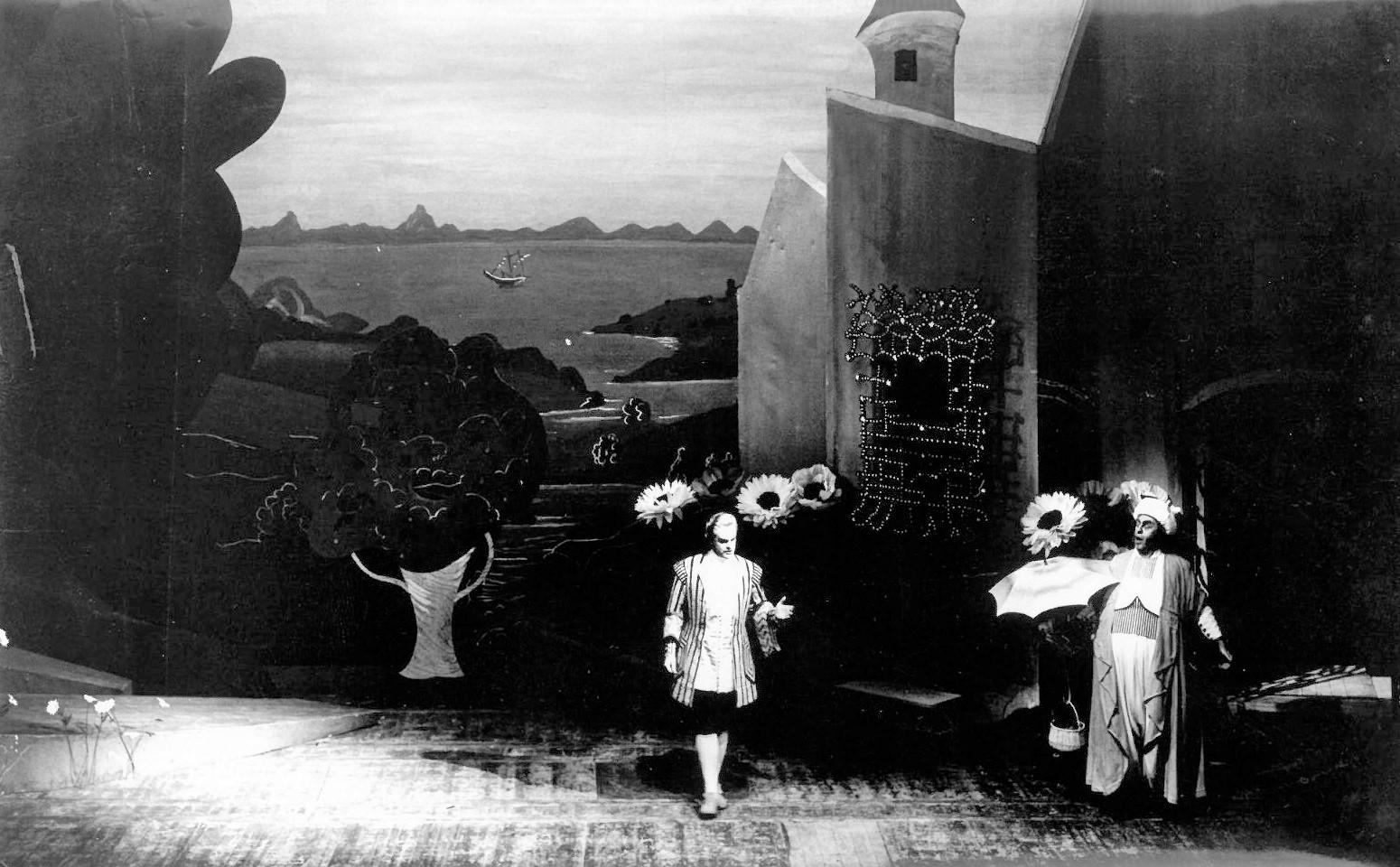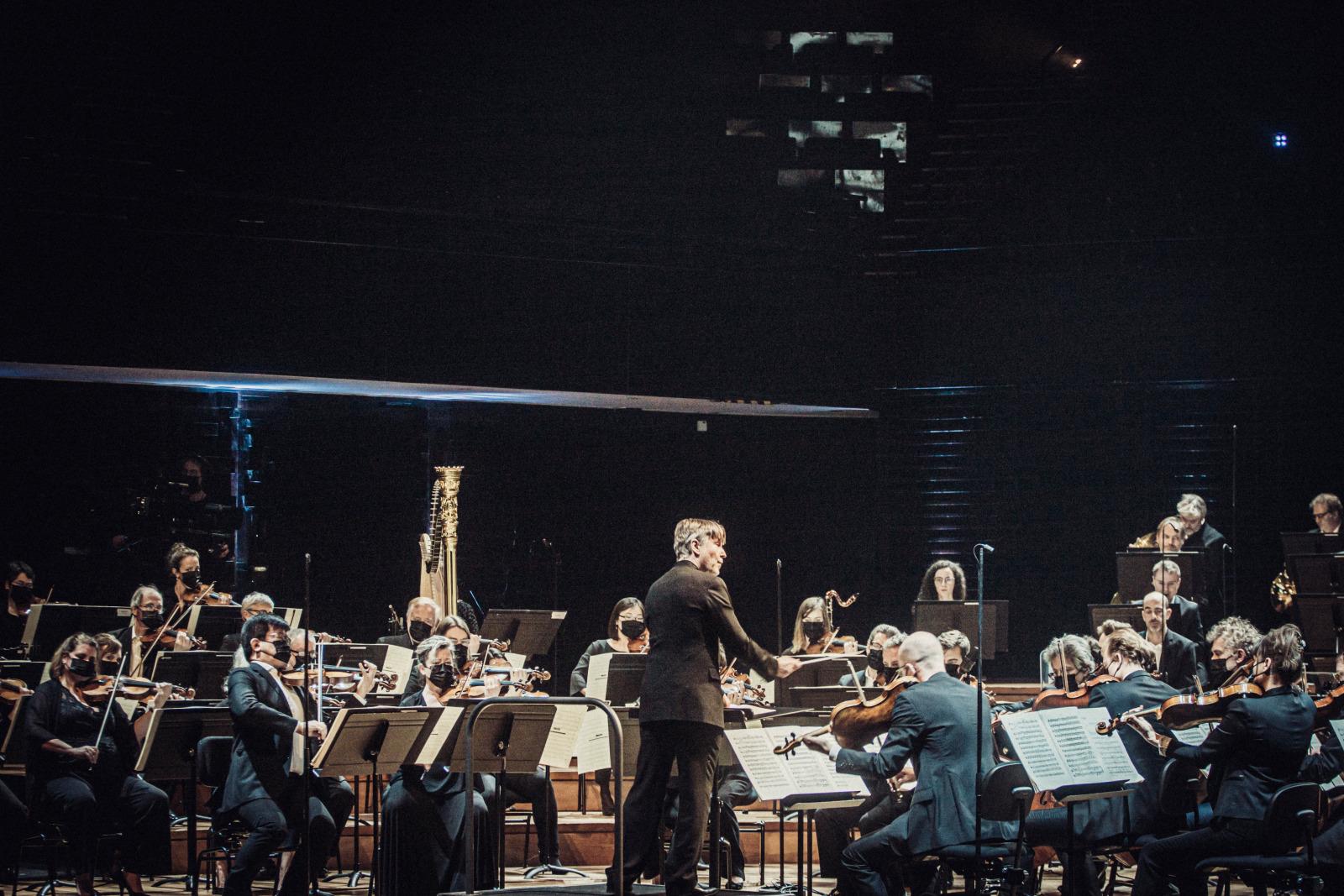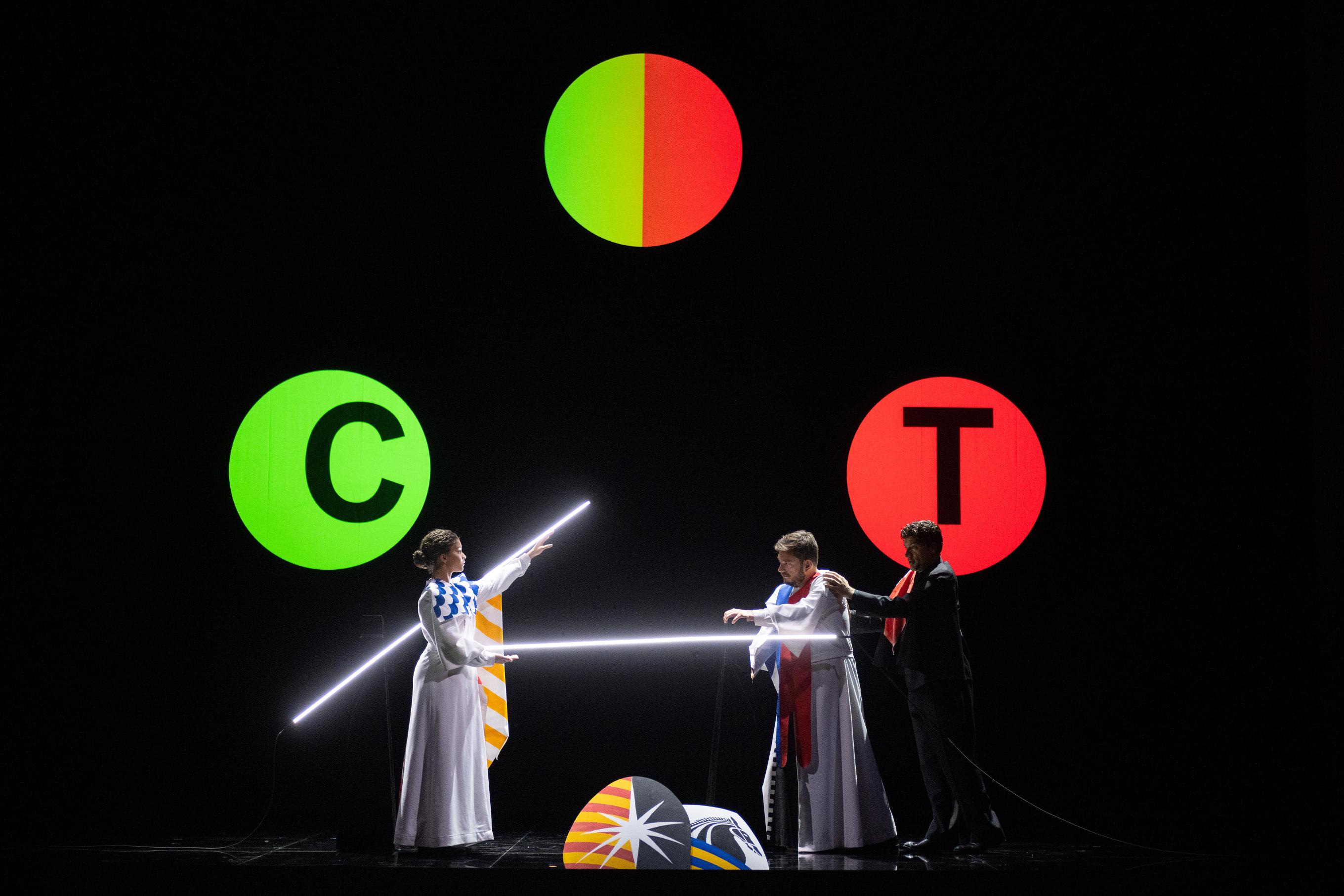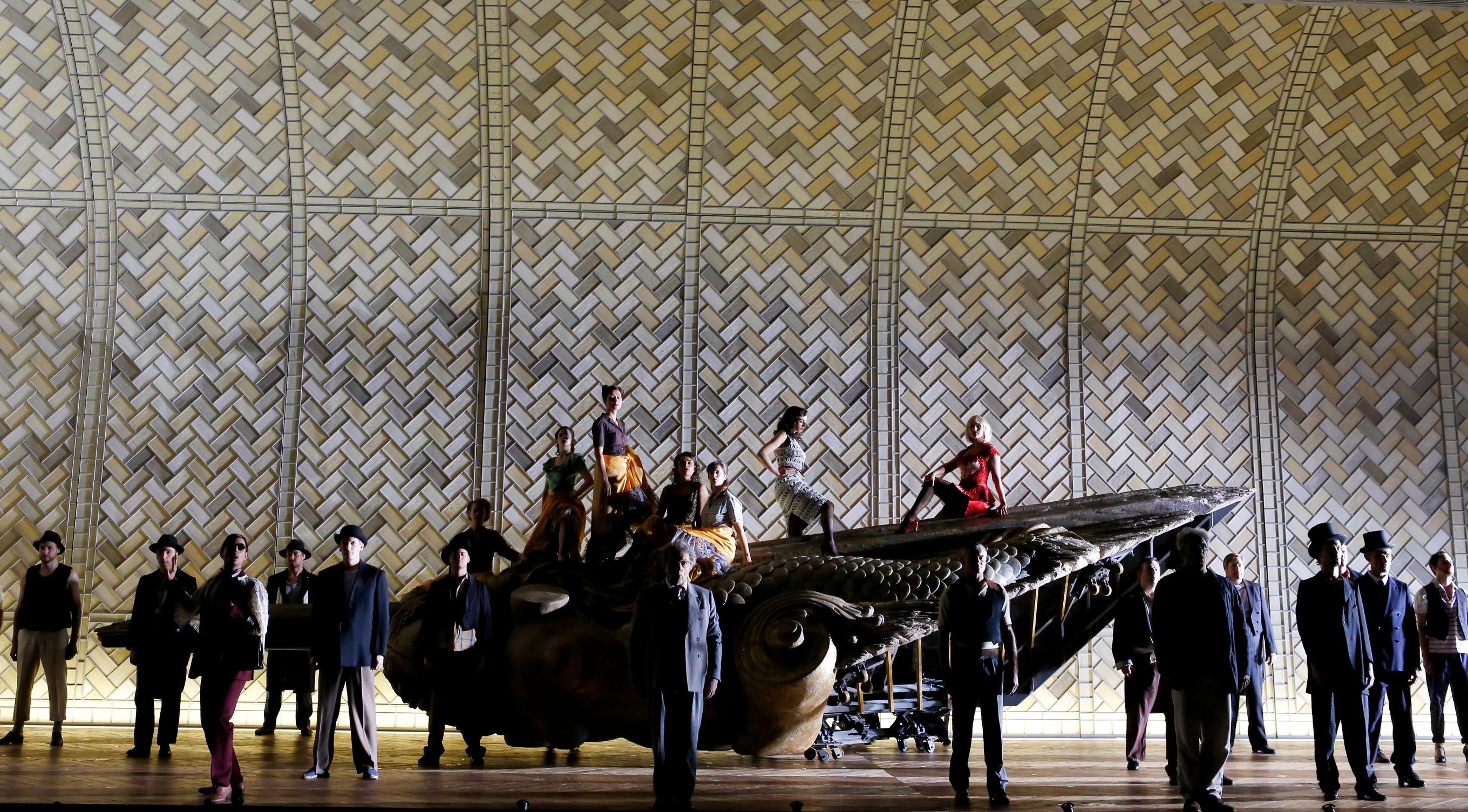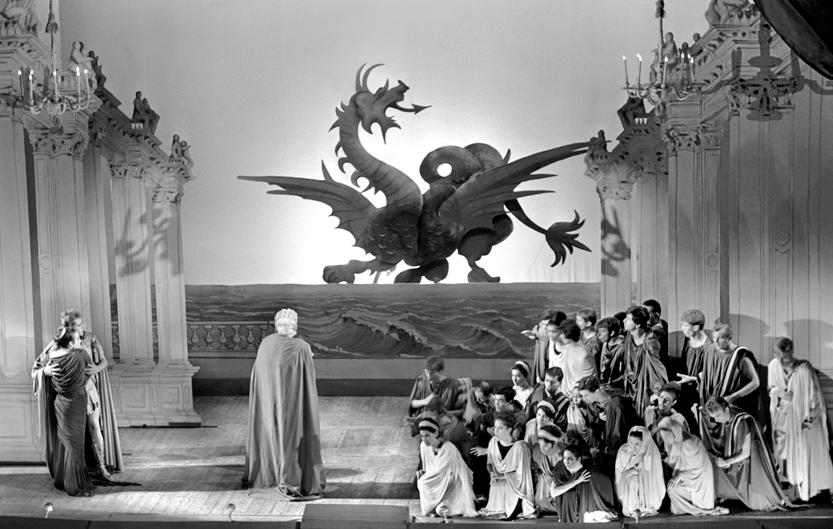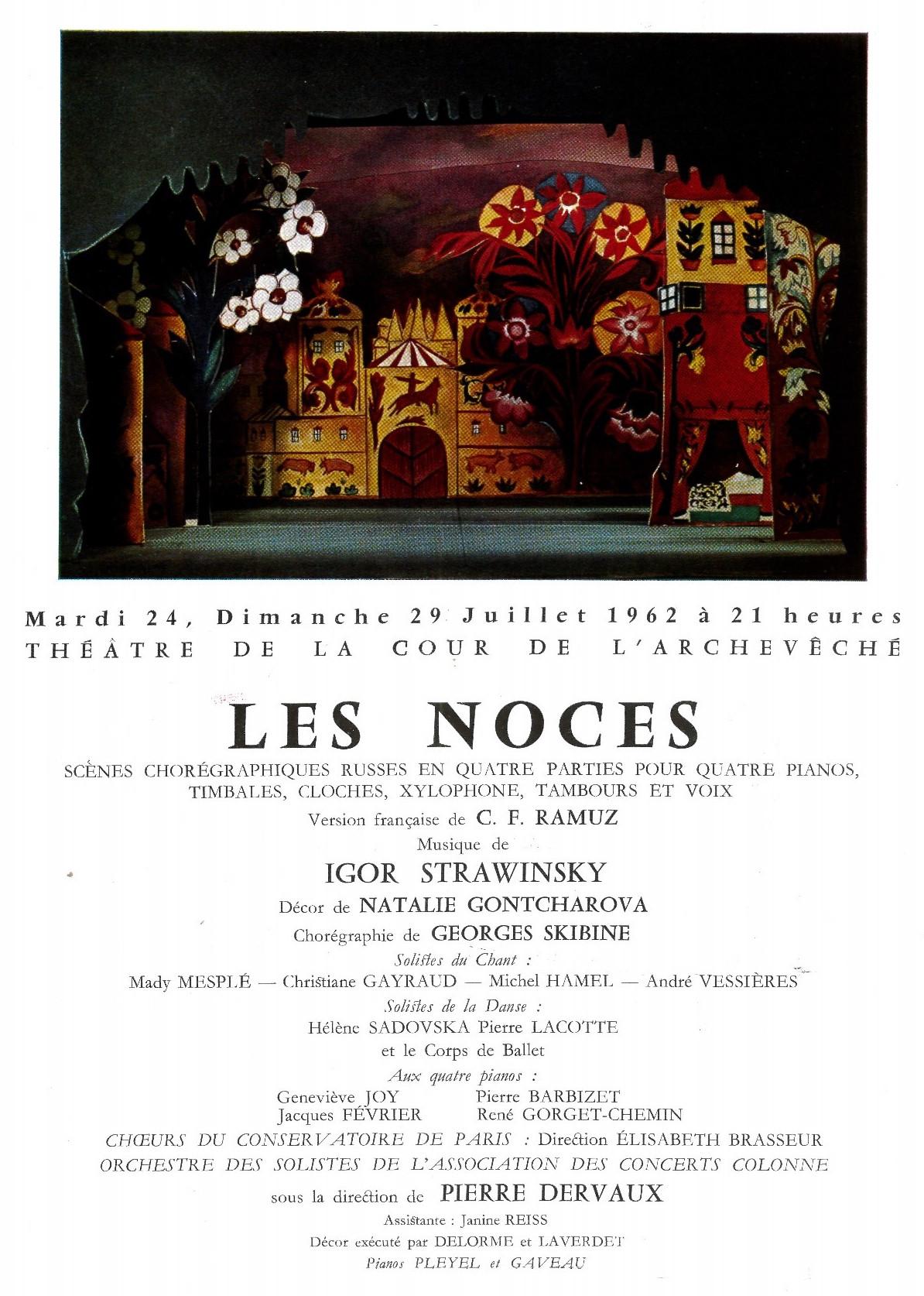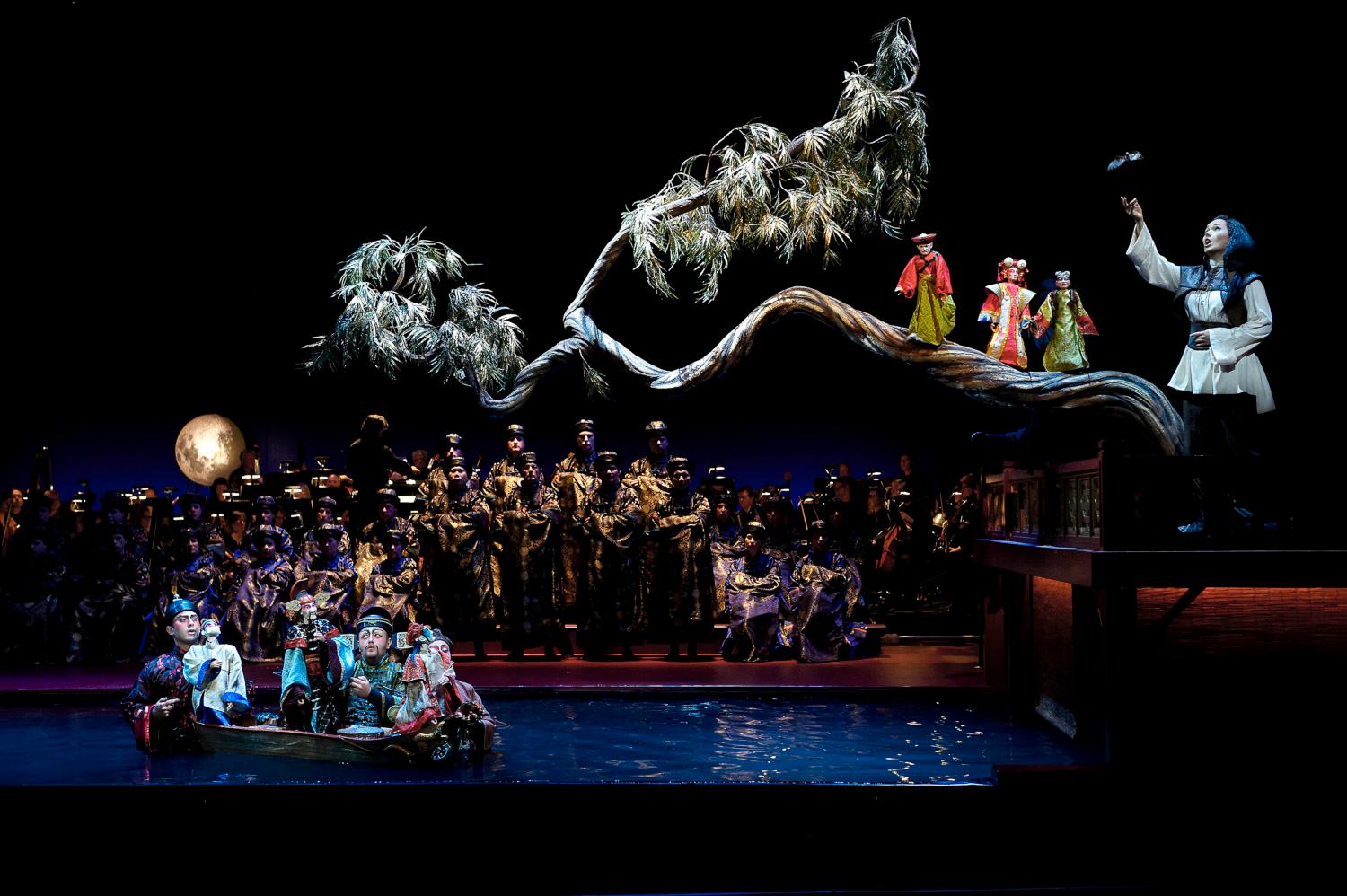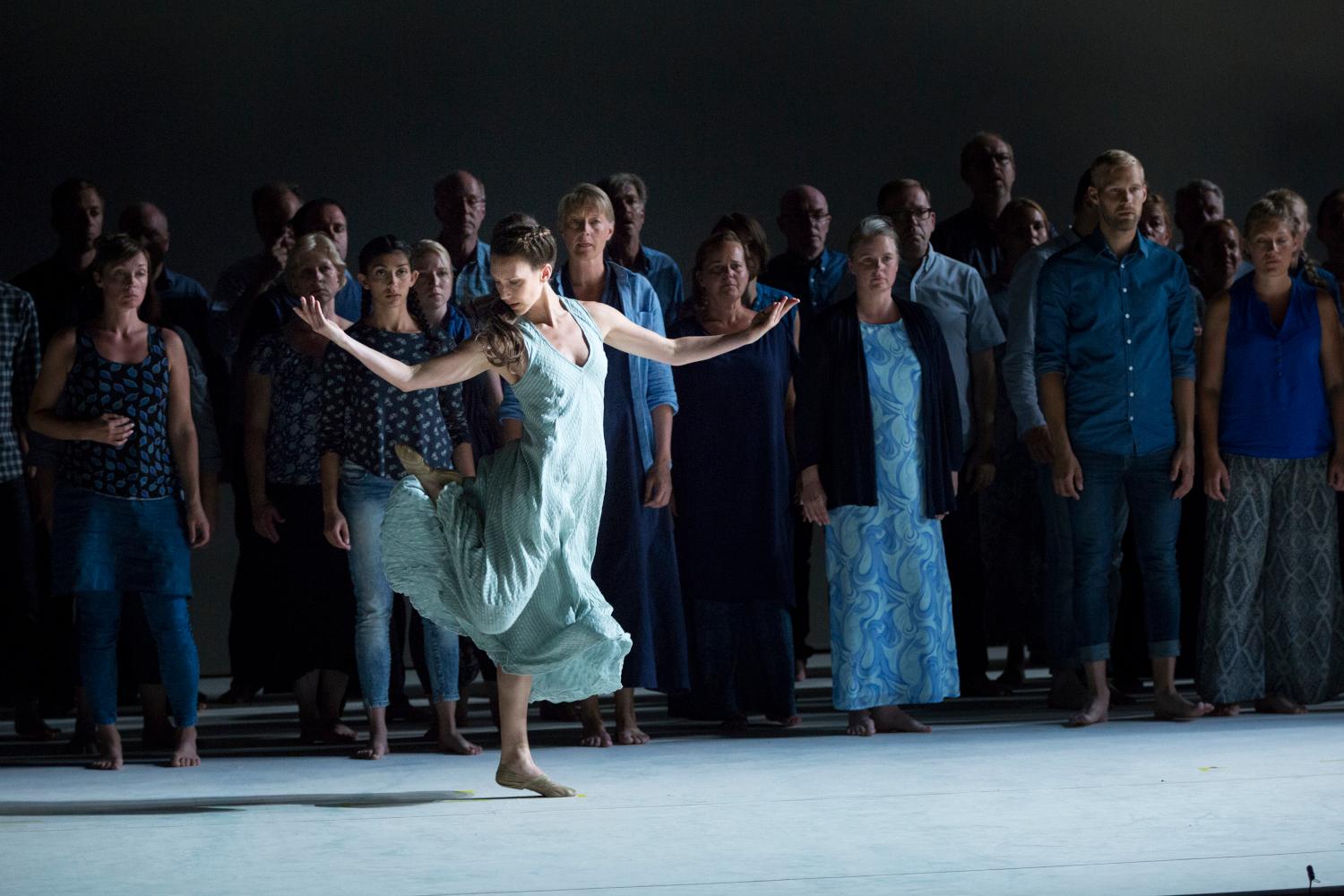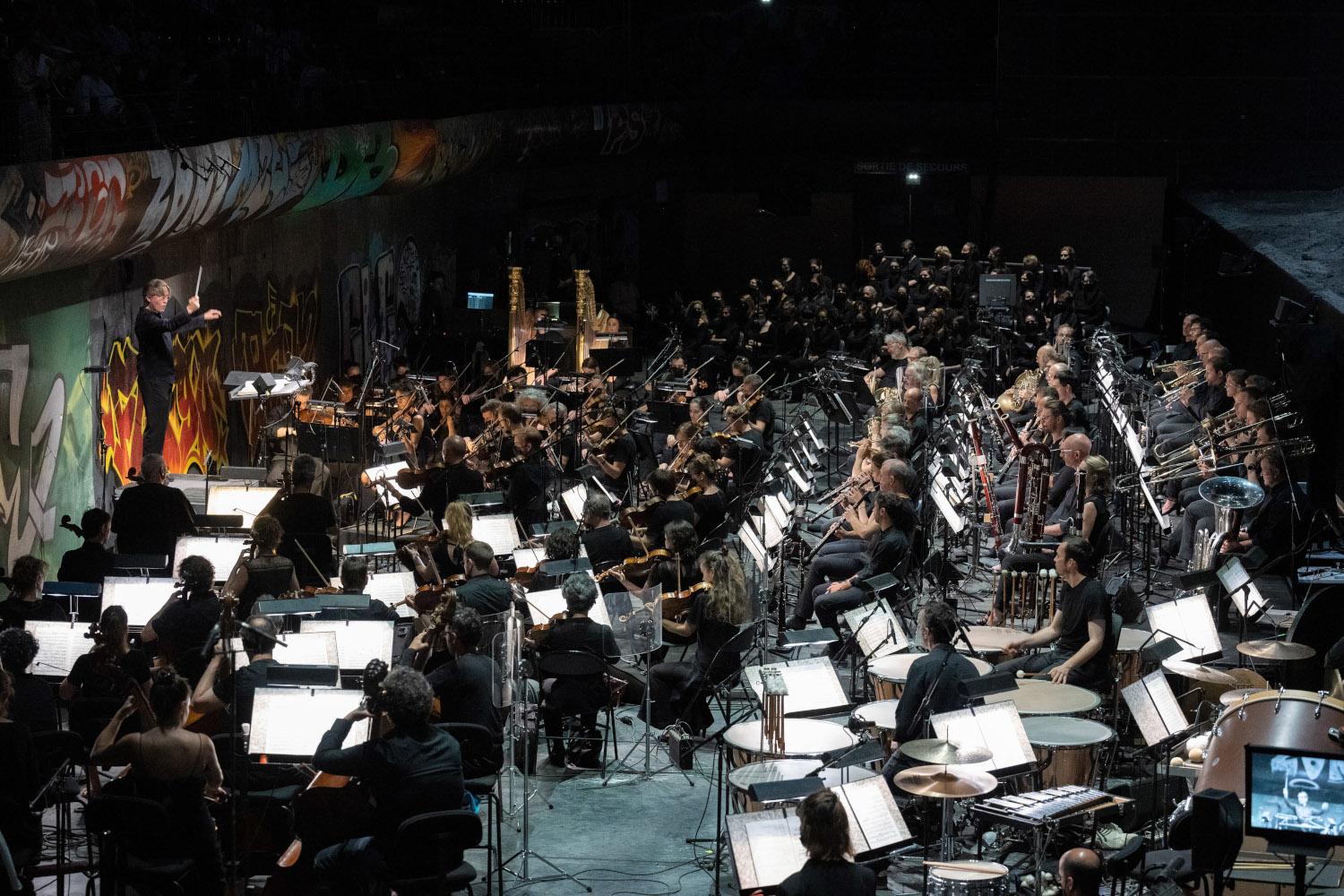THE TURANGALÎLA-SYMPHONIE AND INSTRUMENTAL MUSICAL CREATION AT THE FESTIVAL D’AIX
The Festival d’Aix is renowned for its operatic productions, and especially for the many operas that have premiered there. But since its foundation, the Festival has also been a centre for contemporary instrumental creation. Through its generous programme of concerts, the Festival offers its audiences and the international stage a window onto contemporary music and creation.
Olivier Messiaen’s Turangalîla-Symphonie (1949) — which will be conducted this summer by Esa-Pekka Salonen, leading the Orchestre de Paris — takes us back to the beginnings of the Festival d’Aix: it was there that Roger Désormière conducted the French premiere of the piece in 1950, only a few months after its world premiere in Boston.
Thus, since its early years, the Festival d’Aix has been a central arena for contemporary music, which, like its operatic productions, is one of the Festival’s key components. The following provides an overview of the symphonic and instrumental creations that have made Aix a vibrant space for instrumental composition since 1948.
1950 — OLIVIER MESSIAEN’S TURANGALÎLA-SYMPHONIE
Olivier Messiaen’s Turangalîla-Symphonie was commissioned by the Boston Symphony Orchestra at the end of 1940s. After two years of work, the piece was performed at Symphony Hall in Boston and conducted by Leonard Bernstein; a few months later, on 25 July 1950, the French premiere took place at the Théâtre de l’Archevêché, as part of the Festival d’Aix-en-Provence. You can listen to a short programme on France Musique devoted to this high-profile musical event.
The title of the Turangalîla-Symphonie, one of the composer’s iconic works, was taken from Sanskrit and can have many meanings — e.g. love song, elapsing time, or a horse’s gallop. The piece stands out especially for its bright colours and its atypical and varied choice of instrumentation.
Under the baton of Roger Désormière, the Orchestre national de France (known at the time as the Orchestre national de l’ORTF) accompanied the same two soloists who had performed the piano and ondes Martenot parts in Boston: Yvonne Loriod and Ginette Martenot.
Ginette Martenot was the sister of Maurice Martenot (1898-1980), who invented the ondes Martenot at the beginning of the twentieth century; as a performer, she played an important role in popularising the instrument. The ondes Martenot is a keyboard with an electromagnetic ribbon, which produces novel sounds and possesses a flexibility that is similar to that of the human voice. With a metal ring, you can also modulate the notes it plays.
Olivier Messiaen was not the first person to utilize this instrument, although his symphony helped spread its renown more quickly. The ondes Martenot had also been employed by other composers, like Arthur Honegger and Darius Milhaud, for some of their orchestral pieces. The two composers were members of “Les Six”, a group of avant-garde musicians who spent time with Jean Cocteau shortly after World War I and met frequently at the Festival d’Aix in the 1950s — either as simple festivalgoers, or as artists invited to present their work. Thus, an entire avant-garde musical network converged at Aix-en-Provence every summer, and the Turangalîla-Symphonie was but one manifestation of their talent.
However, the Festival’s relationship with this piece did not stop in 1950: in 2008, the Turangalîla-Symphonie was performed at Aix once again to celebrate the 100th anniversary of Olivier Messiaen’s birth. The Southwest German Radio Symphony Orchestra, conducted by Sylvain Cambreling, accompanied Roger Muraro and Valérie Hartmann-Claverie on the ondes Martenot, this time at the Grand Théâtre de Provence.
On each occasion, the orchestra performing the symphony has been on the cutting edge of contemporary music: the Southwest German Radio Symphony Orchestra, for example, has often spearheaded world premieres at Aix-en-Provence. Founded in Baden-Baden in 1946, the orchestra first achieved success under the baton of Hans Rosbaud and then Ernst Bour, performing lyrical works by Mozart as well as of contemporary pieces.
This year, to commemorate the thirtieth anniversary of Olivier Messiaen’s passing, the Festival will be presenting, for the third time, what is undoubtedly the composer’s most famous orchestral piece.
1970 — HENRI DUTILLEUX’S TOUT UN MONDE LOINTAIN…, CONCERTO FOR CELLO & ORCHESTRA
In the summer of 1970, another major work of contemporary music made its premiere at the Festival — and this time, it was a world premiere. Henri Dutilleux (1916–2013) composed the piece specifically for the cellist Mstislav Rostropovitch (1927–2007), a great twentieth-century performer, remembered notably for playing a Bach cello suite next the fallen Berlin wall in November 1989.
Gabriel Dussurget, founder and first director of the Festival, introduced the two artists to each other, as well as to Serge Baudo, a young conductor from Marseille. Rostropovitch learned the concerto in record time, just a few days before the premiere. The performance was a huge success — so much so that the artists played the entire concerto twice, in response to the audience’s sustained applause at the Théâtre de l’Archevêché.
[[{"fid":"42391","view_mode":"newsletter","fields":{"format":"newsletter","field_file_image_alt_text[fr][0][value]":"Mstislav Rostropovich au violoncelle et Serge Baudo à la direction – répétition du Concerto pour violoncelle n°1 d’Henri Dutilleux, au Théâtre de l’Archevêché (juillet 1970), Fonds du Festival international d’art lyrique","field_file_image_title_text[fr][0][value]":"Mstislav Rostropovich au violoncelle et Serge Baudo à la direction – répétition du Concerto pour violoncelle n°1 d’Henri Dutilleux, au Théâtre de l’Archevêché (juillet 1970), Fonds du Festival international d’art lyrique","field_caption[fr][0][value]":"photographie Philippe Coqueux, Ville d’Aix-en-Provence, Musée des Tapisseries."},"type":"media","field_deltas":{"1":{"format":"newsletter","field_file_image_alt_text[fr][0][value]":"Mstislav Rostropovich au violoncelle et Serge Baudo à la direction – répétition du Concerto pour violoncelle n°1 d’Henri Dutilleux, au Théâtre de l’Archevêché (juillet 1970), Fonds du Festival international d’art lyrique","field_file_image_title_text[fr][0][value]":"Mstislav Rostropovich au violoncelle et Serge Baudo à la direction – répétition du Concerto pour violoncelle n°1 d’Henri Dutilleux, au Théâtre de l’Archevêché (juillet 1970), Fonds du Festival international d’art lyrique","field_caption[fr][0][value]":"photographie Philippe Coqueux, Ville d’Aix-en-Provence, Musée des Tapisseries."}},"attributes":{"alt":"Mstislav Rostropovich au violoncelle et Serge Baudo à la direction – répétition du Concerto pour violoncelle n°1 d’Henri Dutilleux, au Théâtre de l’Archevêché (juillet 1970), Fonds du Festival international d’art lyrique","title":"Mstislav Rostropovich au violoncelle et Serge Baudo à la direction – répétition du Concerto pour violoncelle n°1 d’Henri Dutilleux, au Théâtre de l’Archevêché (juillet 1970), Fonds du Festival international d’art lyrique","class":"media-element file-newsletter","data-delta":"1"}}]]Mstislav Rostropovich at the cello and Serge Baudo in the conductor's pit – rehearsal of Henri Dutilleux's Concerto for Cello n°1 d’Henri Dutilleux, at the Théâtre de l’Archevêché (July 1970), Fonds du Festival international d’art lyrique, photographie Philippe Coqueux, Ville d’Aix-en-Provence, Musée des Tapisseries.
—
The work was based on Charles Baudelaire’s “La Chevelure”, a poem in five movements that evokes a world of magical reverie. The sounds of the marimba, the glockenspiel and the celesta enhance this harmonic journey composed by Henri Dutilleux.
1977-1986 : THE CENTRE ACANTHES AT AIX: CONTEMPORARY MUSIC AT THE HEART OF THE FESTIVAL
This creative momentum was perpetuated thanks to the bond formed at the end of the 1970s between the Festival and the brand-new Centre Acanthes — originally the Centre Sirius, named for a piece of electroacoustic music by Karlheinz Stockhausen. The world premiere of Sirius, coproduced by the Festival d’Aix, marked the beginning of a decade-long collaboration and an exploration of contemporary music at the Festival.
[[{"fid":"42392","view_mode":"wysiwyg","fields":{"format":"wysiwyg","field_file_image_alt_text[fr][0][value]":"Extrait du programme de salle 1977 : annonce de la création mondiale de Sirius (Karlheinz Stockhausen), le 8 août 1977","field_file_image_title_text[fr][0][value]":"Extrait du programme de salle 1977 : annonce de la création mondiale de Sirius (Karlheinz Stockhausen), le 8 août 1977","field_caption[fr][0][value]":"Fonds du Festival international d’art lyrique d’Aix-en-Provence, programme de salle 1977, Association pour le Festival international d’art lyrique d’Aix-en-Provence."},"type":"media","field_deltas":{"7":{"format":"wysiwyg","field_file_image_alt_text[fr][0][value]":"Extrait du programme de salle 1977 : annonce de la création mondiale de Sirius (Karlheinz Stockhausen), le 8 août 1977","field_file_image_title_text[fr][0][value]":"Extrait du programme de salle 1977 : annonce de la création mondiale de Sirius (Karlheinz Stockhausen), le 8 août 1977","field_caption[fr][0][value]":"Fonds du Festival international d’art lyrique d’Aix-en-Provence, programme de salle 1977, Association pour le Festival international d’art lyrique d’Aix-en-Provence."}},"attributes":{"alt":"Extrait du programme de salle 1977 : annonce de la création mondiale de Sirius (Karlheinz Stockhausen), le 8 août 1977","title":"Extrait du programme de salle 1977 : annonce de la création mondiale de Sirius (Karlheinz Stockhausen), le 8 août 1977","class":"media-element file-wysiwyg","data-delta":"7"}}]]Extract of the concert programme dating back to 1977 : notice of Sirius' world premiere (Karlheinz Stockhausen), on 8 August 1977. Fonds du Festival international d’art lyrique d’Aix-en-Provence, programme de salle 1977, Association pour le Festival international d’art lyrique d’Aix-en-Provence.
—
Every year, the Centre Acanthes would invite a major figure of contemporary music to Aix in order to introduce various trends to audiences, and instruct “trainees” (100–150 people per edition) in the cultivation of contemporary music. In the period from 1977 to 1986, Iannis Xenakis (1978 and 1983), György Ligeti, Karlheinz Stockhausen (1977), and Maurice Béjart (1982) came to Aix, where they taught masterclasses and supported the creation of innovative works. Sessions devoted to percussion instruments (1984) and musical theatre (1986) were also interspersed among the other courses at the Centre Acanthes.
The Festival would thus coproduce one or two of the Centre Acanthes’s concerts per edition and include them in the Festival programme; these concerts would generally be held at the Cloître Saint-Louis.
With the arrival of the first sessions of the Centre Acanthes — which would later become affiliated with the Festival d’Avignon (in 1987), and then Metz (in 2004), and finally IRCAM (since 2011) — many works by contemporary composers made their world premiere at the Festival d’Aix in the 1970s and 1980s, and helped solidify the Festival’s role in the propagation of contemporary music.
THE ACADÉMIE EUROPÉENNE DE MUSIQUE: A CRUCIBLE FOR MUSICAL CREATION SINCE 1998
When it was re-founded by Stéphane Lissner in 1998, the Festival added the Académie Européenne de Musique to its structure: this training centre for young artists focused primarily on singing and vocal instruction through residencies and masterclasses for not only singers, but for instrumentalists as well.
A lesser known, but equally important, aspect of the Académie is its residencies for composition, opera making, and chamber music. With these additional tools to support young musicians, the Académie has served as a crucible for musical creation for nearly a quarter of a century now.
[[{"fid":"42393","view_mode":"newsletter","fields":{"format":"newsletter","field_file_image_alt_text[fr][0][value]":"Ana Sokolović et Carlo Rizzi (direction musicale) venant saluer à la fin de la création du Concerto pour orchestre de la compositrice bulgare, le 20 juillet 2015, avec l’Orchestre des Jeunes de la Méditerrané","field_file_image_title_text[fr][0][value]":"Ana Sokolović et Carlo Rizzi (direction musicale) venant saluer à la fin de la création du Concerto pour orchestre de la compositrice bulgare, le 20 juillet 2015, avec l’Orchestre des Jeunes de la Méditerrané","field_caption[fr][0][value]":"Vincent Beaume"},"type":"media","field_deltas":{"4":{"format":"newsletter","field_file_image_alt_text[fr][0][value]":"Ana Sokolović et Carlo Rizzi (direction musicale) venant saluer à la fin de la création du Concerto pour orchestre de la compositrice bulgare, le 20 juillet 2015, avec l’Orchestre des Jeunes de la Méditerrané","field_file_image_title_text[fr][0][value]":"Ana Sokolović et Carlo Rizzi (direction musicale) venant saluer à la fin de la création du Concerto pour orchestre de la compositrice bulgare, le 20 juillet 2015, avec l’Orchestre des Jeunes de la Méditerrané","field_caption[fr][0][value]":"Vincent Beaume"}},"attributes":{"alt":"Ana Sokolović et Carlo Rizzi (direction musicale) venant saluer à la fin de la création du Concerto pour orchestre de la compositrice bulgare, le 20 juillet 2015, avec l’Orchestre des Jeunes de la Méditerrané","title":"Ana Sokolović et Carlo Rizzi (direction musicale) venant saluer à la fin de la création du Concerto pour orchestre de la compositrice bulgare, le 20 juillet 2015, avec l’Orchestre des Jeunes de la Méditerrané","class":"media-element file-newsletter","data-delta":"4"}}]]Ana Sokolović et Carlo Rizzi (conductor) on stage after the world premiere of the Concerto for Orchestra by the young Bulgarian composer, on 20 July 2015, with the Mediterranean Youth Orchestra. Photographie Vincent Beaume.
—
Ana Sokolović, a resident of the first Académie in 1998, thus returned to the Festival in 2015 for the European premiere of her Concerto for Orchestra at the Grand Théâtre de Provence. During its 2015 session, the Mediterranean Youth Orchestra, conducted by Carlo Rizzi, was coached by musicians of the London Symphony Orchestra. Another artist who attended the composition residency was Alexandros Markéas, whose Rondo notturno premiered in 1998.
The composition residencies are not the only places where new works are created, since the Académie as a whole serves as a setting for encounters between young artists, like a veritable incubator for talent.
[[{"fid":"42394","view_mode":"newsletter","fields":{"format":"newsletter","field_file_image_alt_text[fr][0][value]":"Quatuor Gerhard, Anaëlle Tourret (harpe) et Dorian Selmi (percussions), création mondiale de Lyrae (Camille Pépin) le 10 juillet 2017 dans la cour de l’Hôtel Maynier d’Oppède.","field_file_image_title_text[fr][0][value]":"Quatuor Gerhard, Anaëlle Tourret (harpe) et Dorian Selmi (percussions), création mondiale de Lyrae (Camille Pépin) le 10 juillet 2017 dans la cour de l’Hôtel Maynier d’Oppède.","field_caption[fr][0][value]":"Vincent Beaume"},"type":"media","field_deltas":{"5":{"format":"newsletter","field_file_image_alt_text[fr][0][value]":"Quatuor Gerhard, Anaëlle Tourret (harpe) et Dorian Selmi (percussions), création mondiale de Lyrae (Camille Pépin) le 10 juillet 2017 dans la cour de l’Hôtel Maynier d’Oppède.","field_file_image_title_text[fr][0][value]":"Quatuor Gerhard, Anaëlle Tourret (harpe) et Dorian Selmi (percussions), création mondiale de Lyrae (Camille Pépin) le 10 juillet 2017 dans la cour de l’Hôtel Maynier d’Oppède.","field_caption[fr][0][value]":"Vincent Beaume"}},"attributes":{"alt":"Quatuor Gerhard, Anaëlle Tourret (harpe) et Dorian Selmi (percussions), création mondiale de Lyrae (Camille Pépin) le 10 juillet 2017 dans la cour de l’Hôtel Maynier d’Oppède.","title":"Quatuor Gerhard, Anaëlle Tourret (harpe) et Dorian Selmi (percussions), création mondiale de Lyrae (Camille Pépin) le 10 juillet 2017 dans la cour de l’Hôtel Maynier d’Oppède.","class":"media-element file-newsletter","data-delta":"5"}}]]Quatuor Gerhard, Anaëlle Tourret (harpsichord) and Dorian Selmi (percussions), world premiere of Lyrae (Camille Pépin) on 10 July 2017 in the Hôtel Maynier d’Oppède Courtyard. Photographie Vincent Beaume.
—
Hence, for the 2011 contemporary vocal residency, Karol Beffa composed Mes heures de fièvre to offer Académiciens a piece of music they could work to hone their skills. In 2017, as part of the chamber music residency, Camille Pépin (recipient of the 2020 Victoire de la musique classique award for composition) presented the world premiere of her piece Lyrae, performed by the Gerhard string quartet, Anaëlle Tourret (harp), and Dorian Selmi (percussion).
Lastly, former students of the Académie contribute to the vast movement of musical creation in the Festival’s programme. Two years after she participated in the 2012 Académie, Sabine Devieilhe premiered three works by Manfred Trojahn at the Conservatoire Darius Milhaud: L’Éternité à Lourmarin (based on a poem by René Char dedicated to Albert Camus), the prologue to Contrevenir, and L’Allégresse, all composed specifically for the soprano and for a chamber music ensemble.
[[{"fid":"42395","view_mode":"newsletter","fields":{"format":"newsletter","field_file_image_alt_text[fr][0][value]":"Sabine Devieilhe (soprano) et l’Ensemble Modern dirigés par Franck Ollu à l’Auditorium Darius Milhaud pour un concert Manfred Trojahn le 13 juillet 2014.","field_file_image_title_text[fr][0][value]":"Sabine Devieilhe (soprano) et l’Ensemble Modern dirigés par Franck Ollu à l’Auditorium Darius Milhaud pour un concert Manfred Trojahn le 13 juillet 2014.","field_caption[fr][0][value]":"Jean-Claude Carbonne"},"type":"media","field_deltas":{"6":{"format":"newsletter","field_file_image_alt_text[fr][0][value]":"Sabine Devieilhe (soprano) et l’Ensemble Modern dirigés par Franck Ollu à l’Auditorium Darius Milhaud pour un concert Manfred Trojahn le 13 juillet 2014.","field_file_image_title_text[fr][0][value]":"Sabine Devieilhe (soprano) et l’Ensemble Modern dirigés par Franck Ollu à l’Auditorium Darius Milhaud pour un concert Manfred Trojahn le 13 juillet 2014.","field_caption[fr][0][value]":"Jean-Claude Carbonne"}},"attributes":{"alt":"Sabine Devieilhe (soprano) et l’Ensemble Modern dirigés par Franck Ollu à l’Auditorium Darius Milhaud pour un concert Manfred Trojahn le 13 juillet 2014.","title":"Sabine Devieilhe (soprano) et l’Ensemble Modern dirigés par Franck Ollu à l’Auditorium Darius Milhaud pour un concert Manfred Trojahn le 13 juillet 2014.","class":"media-element file-newsletter","data-delta":"6"}}]]Sabine Devieilhe (soprano) and the Ensemble Modern conducted by Franck Ollu at the Auditorium Darius Milhaud for a Manfred Trojahn Concert on 13 July 2014. Photographie Jean-Claude Carbonne.
—
Often a meeting place for musical innovators, and always a centre for the creation of orchestral and chamber music works, the Festival has, since its inception, been a major space for contemporary musical creation.
— History of the Festival— At the Festival
Monday, May 2, 2022